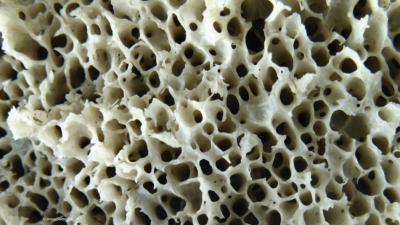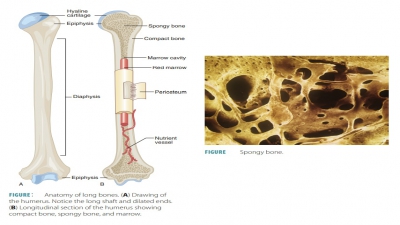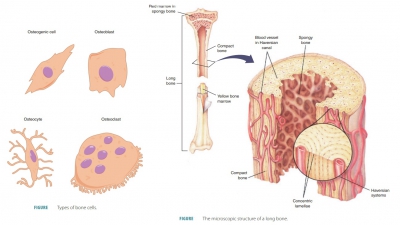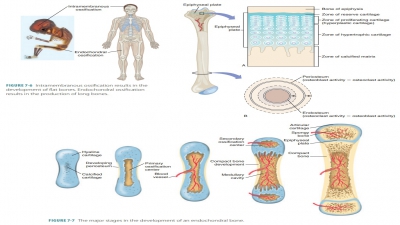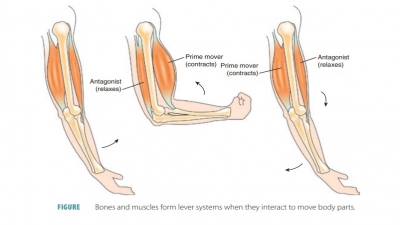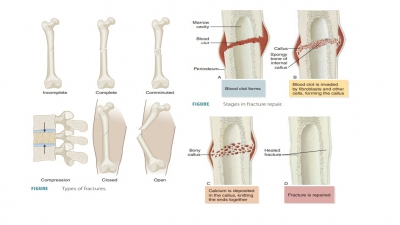Classifications of Bones
| Home | | Anatomy and Physiology | | Anatomy and Physiology Health Education (APHE) |Chapter: Anatomy and Physiology for Health Professionals: Support and Movement: Bone Tissues and the Skeletal System
The bones of the skeleton are divided into the axial and appendicular groups. The axial skeleton makes up the body’s long axis and includes the bones that comprise the skull, vertebral column, and thoracic cage, which function to protect and support various body parts.
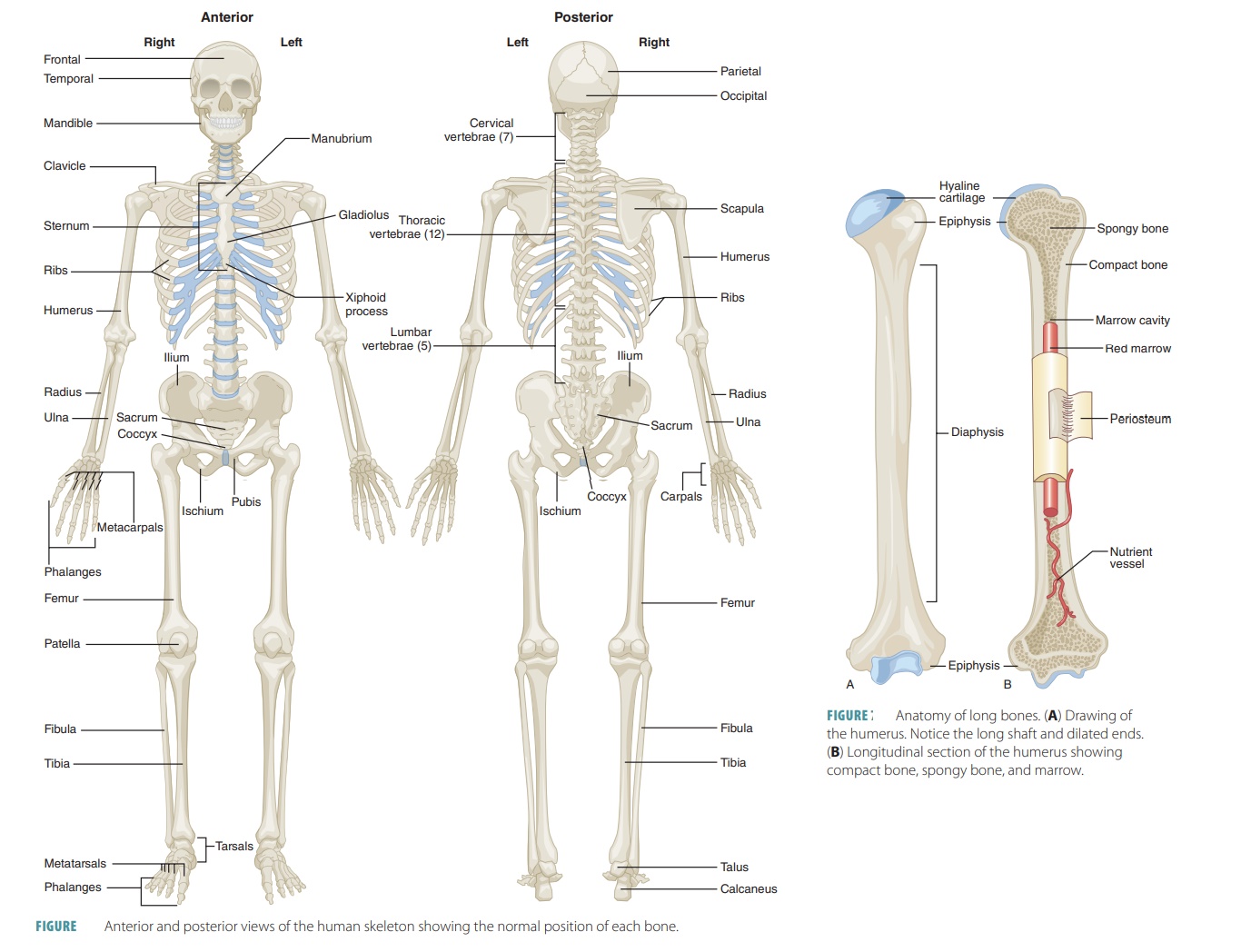
Classifications
of Bones
The bones of the skeleton are
divided into the axial and appendicular groups. The axial
skeleton makes up the body’s long axis
and includes the bones that comprise the skull, vertebral column, and thoracic
cage, which function to protect and support various body parts. The appendicular skeleton is
formed by the bones of the upper and lower limbs and the girdles (shoulder and
hip bones), which attach the limbs to the axial skeleton (FIGURE 7-1). The
sizes of bones vary greatly in the human body, from the tiny inner ear bones to
the femur or thighbone, which may be approximately two feet in length. Each
unique bone shape serves a certain function. Every adult skeleton contains 206
major bones, which are classified based on their individual shapes:
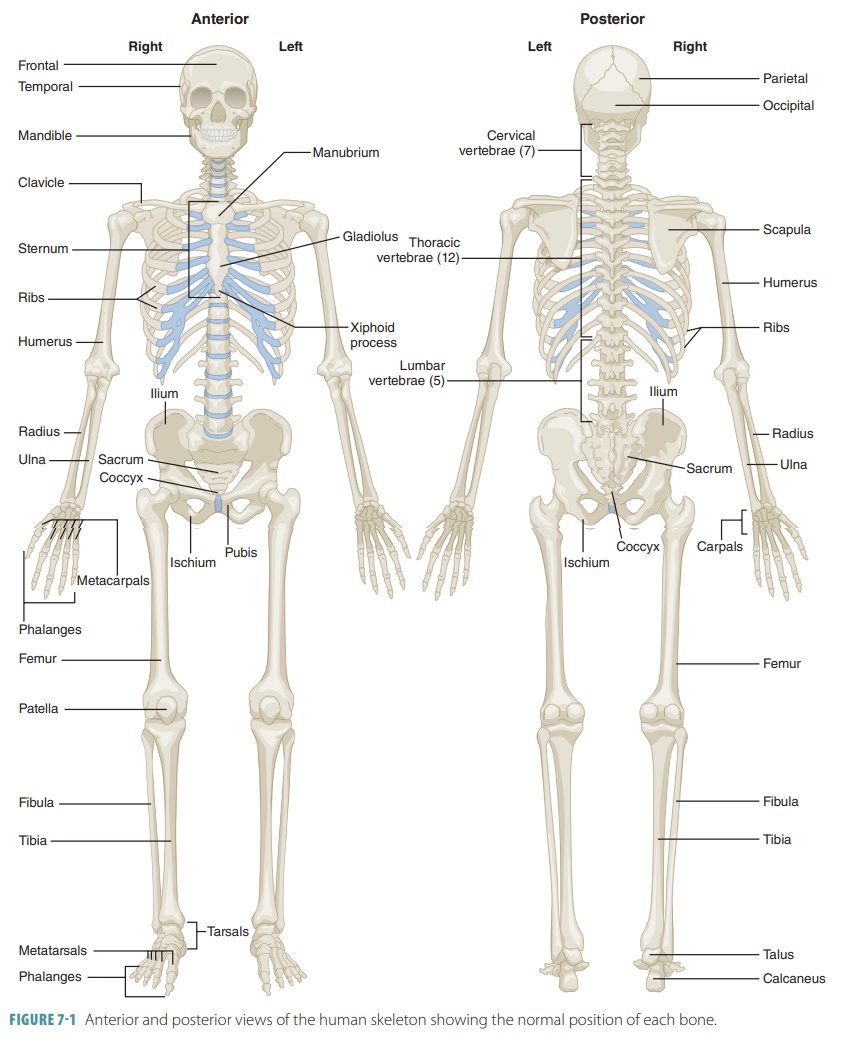
■■ Flat
bones: These resemble
plates with broad surfaces and include the ribs,
sternum or breastbone, scapulae or shoulder blades, and most skull bones. They
provide protection for underlying soft tissues and may be thin and slightly
curved.
■■ Irregular
bones: Irregular bones
have different and complex shapes
and are often connected to other bones. They include many facial bones and
those that make up the vertebrae in the spine and the pelvis.
■■ Short bones: Small and often cube-shaped, short bones include the carpal (wrist) bones and tarsal (ankle)
bones.
■■ Long bones: These have long bone shafts with expanded ends and are much longer than they are wide and are
named for their elongated shape instead of their actual size. For example, the
three bones of each finger are long bones, even though they are relatively
small. All bones of the limbs are long bones, except for the patella (kneecap)
and the bones of the wrists and ankles. Long bones are located in the arms,
legs, palms, soles, fingers, and toes (FIGURE
7-2). The humerus bone
is an example of a long bone.
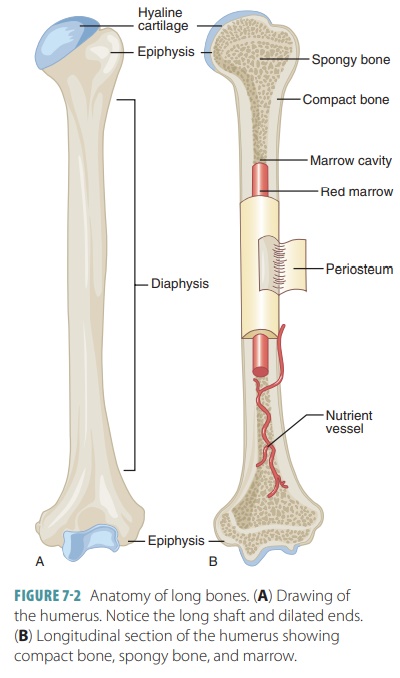
■■ Sutural bones: Also known as Wormian bones, these are the small, flat, and
irregular bones between the flat bones of the skull. They range in size from as
large as a quarter to as small as a grain of sand.
■■ Sesamoid
bones: These are small,
flat bones
resembling sesame
seeds that are most often located near joints within tendons of the hands,
knees, and feet. The patellae are
sesamoid bones. This type of bone may form in up to 26 locations in the body.
Each individual has different num-bers of sesamoid bones. Some help to control
the directions in which tendons pull and some have unknown functions.
1. Compare
the structures and functions of the axial skeleton with the appendicular
skeleton.
2. List
the classifications of bones.
3. Give
examples of long, short, flat, irregular, and sesamoid bones.
Related Topics

